
Hippotion velox, the dark striated hawkmoth, is a species of sphingid moth or the family Sphingidae. The species was described by Johan Christian Fabricius in 1793.

Basiothia medea, the small verdant hawk, is a moth of the family Sphingidae. It is common in open habitats throughout the Ethiopian Region, including Madagascar. It is however probably absent from the equatorial forest belt, except as a vagrant. The species is an active migrant.

Polyptychus paupercula is a moth of the family Sphingidae. It is known from forests from Liberia to Uganda.
Neopolyptychus serrator is a moth of the family Sphingidae. It is known from forests from the Congo to Uganda and western Kenya. It is also known from Cameroon.

Polyptychoides niloticus is a moth of the family Sphingidae. It is found from Zambia to Sudan, Ethiopia and Somalia.
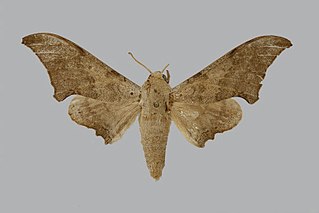
Falcatula cymatodes is a moth of the family Sphingidae. It is known from lowland forests in Ivory Coast, Ghana, Nigeria, Cameroon, Gabon, Uganda, and the Central African Republic.

Rufoclanis numosae, the wavy polyptychus, is a moth of the family Sphingidae. The species was first described by Hans Daniel Johan Wallengren in 1860. It is known from dry bush and arid savanna in much of eastern and southern Africa.
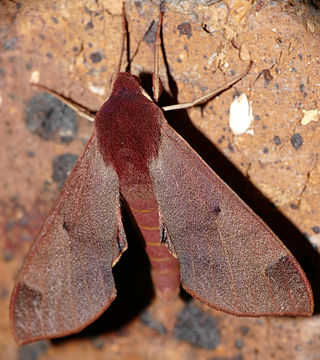
Afroclanis calcareus is a moth of the family Sphingidae. It is known from Brachystegia woodland from northern South Africa, Zimbabwe and Mozambique to Malawi, Zambia, the Democratic Republic of the Congo and Tanzania.

Coelonia fulvinotata is a moth of the family Sphingidae first described by Arthur Gardiner Butler in 1875. It is known from most habitats throughout the Afrotropical realm, from the Gambia east to Ethiopia and south to northern South Africa and Madagascar.
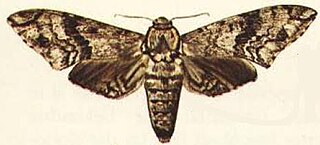
Macropoliana natalensis is a moth of the family Sphingidae. It is known from forests and moist woodland from KwaZulu-Natal to Ethiopia and westwards to Cameroon, Ghana and Sierra Leone.

Pantophaea favillacea is a moth of the family Sphingidae. It is known from savanna and bush from eastern Kenya to Tanzania, Zambia, Angola, Zimbabwe and Mozambique.
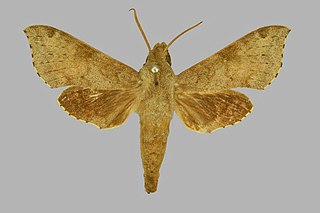
Temnora griseata is a moth of the family Sphingidae. It is known from forests from Nigeria to southern Congo, southern Tanzania and Malawi.

Temnora nephele is a moth of the family Sphingidae. It is known from Cameroon, Gabon, the Republic of the Congo and Nigeria.

Temnora subapicalis is a moth of the family Sphingidae. It is known from highland forest in central Kenya and also in Zimbabwe.

Temnora sardanus is a moth of the family Sphingidae. It is known from forests and heavy woodland from Sierra Leone to Congo and Angola, then to Zimbabwe and East Africa.
Temnora hollandi is a moth of the family Sphingidae. It is known from forests from Nigeria to Congo and Uganda.
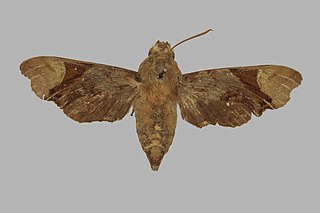
Temnora rattrayi is a moth of the family Sphingidae. It is known from forests in Congo and Uganda.
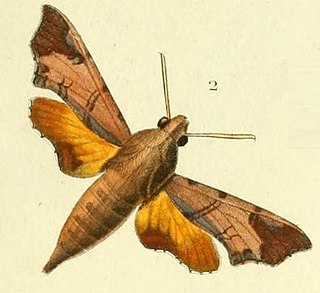
Temnora pseudopylas is a moth of the family Sphingidae. It is very common in eastern and southern Africa, but absent in very dry habitats.

Hypaedalea butleri is a moth of the family Sphingidae. It is known from forests from Sierra Leone to Congo and Uganda.
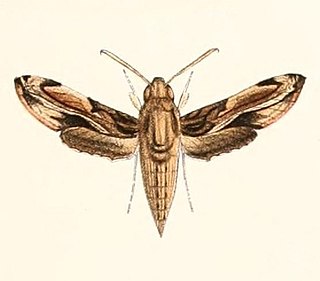
Theretra orpheus is a moth of the family Sphingidae. It is known from most of Africa.

















